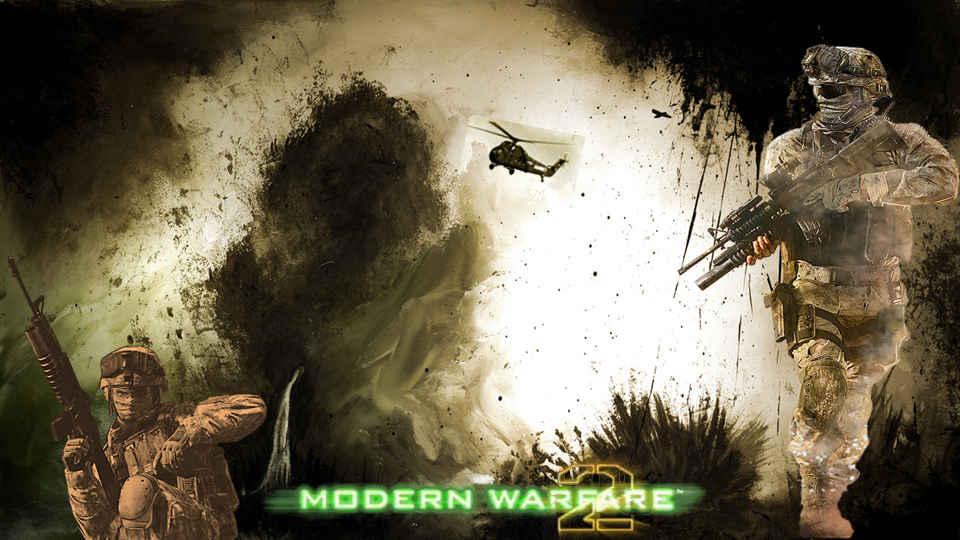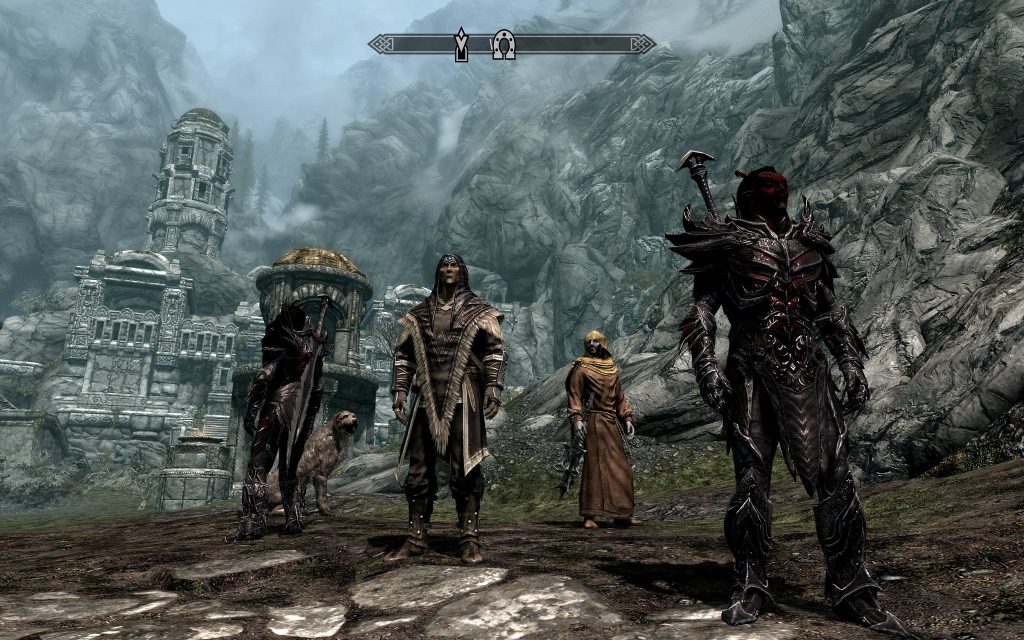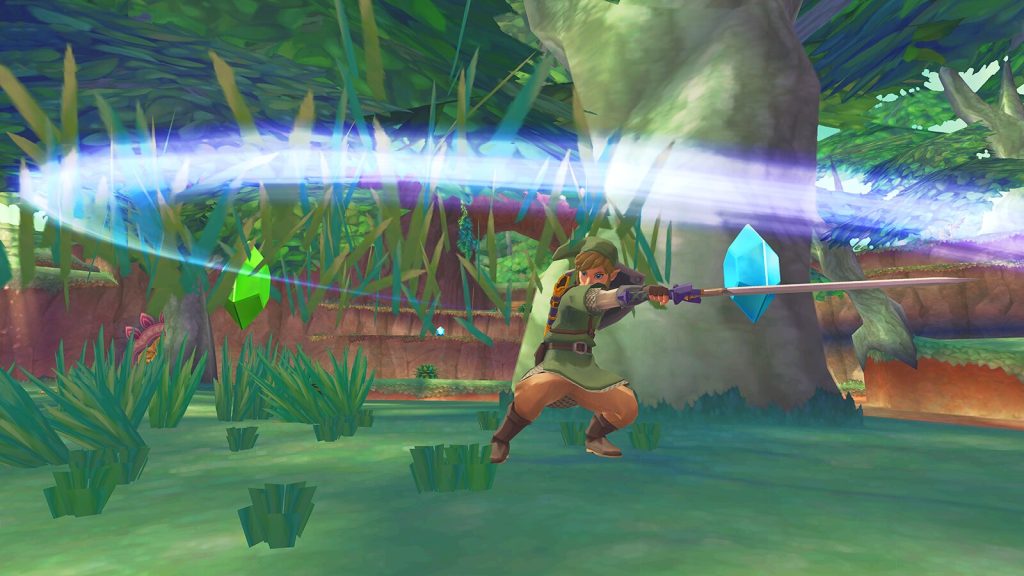10.3 Influential Contemporary Games
With such a short history, the role of video games in culture is constantly evolving. Are video games entertainment or art? Should they focus on fostering real-life skills or developing virtual realities? Certain games have come to prominence in recent years for their innovations and genre-expanding attributes. These notable games not only achieved economic success and popularity but also imparted a visible influence on culture.
The Grand Theft Auto series

The first game in the Grand Theft Auto (GTA) series debuted in 1997 for the PC and Sony PlayStation. The game had players stealing cars—not surprising given its title—and committing a variety of crimes to achieve specific goals. The game’s extreme violence made it popular among players of the late 1990s, but it was the open-world elements that especially appealed to them. They could pursue specific narratives and goals, but if they wanted to drive around and explore the city, they could do that as well in a large variety of cars, from sports cars to tractor-trailers, depending on the player’s goals. Players could also take the violence to any extreme they wished, including stealing cars, killing pedestrians, and engaging the police in a shoot-out. This sandbox-type game permits users to freely pursue objectives of their choice (Donald, 2000).
The GTA series has evolved over the past decade by increasing the realism, options, and explicit content of the first game. The Grand Theft Auto franchise, propelled by the immense and enduring success of Grand Theft Auto V (GTA V) and its online component, Grand Theft Auto Online, has solidified its position as one of the most profitable and consistently controversial entertainment properties in history. While GTA III and GTA IV (including their expansions, such as The Ballad of Gay Tony) were foundational, GTA V, released in 2013, has sold over 215 million copies and generated nearly $10 billion in worldwide revenue, making it the highest-grossing entertainment product of all time.
The franchise continues to court controversy, most recently with discussions surrounding the content and themes of the highly anticipated Grand Theft Auto VI (GTA VI), slated for release in May 2026. Past controversies, such as the infamous “Hot Coffee” mod in Grand Theft Auto: San Andreas and the torture scene in Grand Theft Auto V, highlight the series’ consistent push of boundaries and its mature, often satirical, depiction of crime and society, which continues to spark debate and occasionally lead to censorship in certain regions, as seen with GTA V‘s recent uncensored launch in Saudi Arabia and UAE with a strict 21+ rating (Morales, 2005).
World of Warcraft

World of Warcraft (WoW), released in 2004, hosts a massive multiplayer online role-playing game (MMORPG) loosely based on the Warcraft strategy franchise of the 1990s. The game is conducted entirely online, though players access it through purchased software and subscription fees. Each player chooses an avatar, or character, that belongs to one of several races, such as orcs, elves, and humans. These characters can spend their time in the game by completing quests, learning trades, or engaging in interactions with other characters. As characters gain experience, they obtain skills and earn virtual money. Players also choose whether they can attack other players without prior agreement by selecting a PvP (player versus player) server. The standard server allows players to fight each other, provided both players consent to the action. Players can reserve a third server if they want to role-play or act in character.
The unlimited possibilities in such a game expand the idea of what constitutes a game. WoW challenges conventional notions of what makes a game by allowing the players to create their own goals. Some players may want to increase their character’s experience points; others may feel more comfortable engaging in role-playing, whereas others use the platform to make a profit. This kind of flexibility leads to the development of scenarios never before encountered in game-play, such as the development of economic classes.
Various organizations have sprung up within the WoW universe. Guilds within the universe adhere to specific codes of conduct and collaborate to complete tasks that individuals cannot accomplish alone. The players organize the guilds; WoW developers do not maintain them. Each has its own unique identity and social rules, much like a college fraternity or social club. Voice communication technology enables players to interact with each other as they complete missions, fostering social bonding within such organizations (Barker, 2006).
WoW has taken the medium of video games to unprecedented levels. Although games like Grand Theft Auto offer players considerable freedom, WoW relies on the actions of millions of players to drive the game, allowing people to live their lives through a game in a literal sense. In the game, players can still earn virtual gold through various in-game activities such as mining, gathering herbs, skinning, killing enemies (mob grinding), completing quests, selling loot from old dungeons and raids (especially transmog items), and utilizing crafting professions.
While accumulating gold through these methods can be time-consuming, WoW developers Blizzard Entertainment now officially offers the “WoW Token.” This in-game item can be purchased with real money and then sold on the Auction House for gold, or purchased with gold and redeemed for game time or Blizzard Balance. This official system provides a legitimate way for players to convert real money into gold (and vice-versa), effectively legitimizing a form of RMT within the game’s ecosystem.
Despite the WoW Token, third-party real-money trading (buying gold directly from external websites or individuals) remains against Blizzard’s End User License Agreement (EULA) and is prohibited. Accounts involved in such transactions can face penalties, including the removal of gold and temporary or permanent bans. However, enforcement can be inconsistent, and some players still engage in it, as evidenced by ongoing discussions in player communities.
Call of Duty: Modern Warfare

The Call of Duty series of first-person shooter games has achieved unparalleled success in the video game market, evolving into a global entertainment behemoth. By 2025, the franchise had generated over $35 billion in revenue, solidifying its position as the best-selling first-person shooter game series of all time, with over 500 million copies sold across all platforms by late 2024.
The release of Call of Duty: Modern Warfare 2 in 2009 marked a landmark moment, garnering critical acclaim while also sparking considerable controversy. The game famously included a 5-minute sequence, “No Russian,” where the player, as an undercover CIA agent, could participate in a massacre of innocent civilians at an airport. While players had the option to avoid shooting civilians or skip the sequence entirely, these choices did not prevent widespread international attention and calls to ban the game, with the debate even reaching the United Kingdom’s House of Commons (Games Radar, 2009). This incident highlighted the unique impact of interactive violence in video games compared to passive media, such as movies.
In the years since, the debate surrounding Call of Duty‘s content and its influence has continued to evolve with the series’ ongoing releases and changing monetization strategies. The franchise has seen numerous successful iterations, including the Black Ops series, the Modern Warfare reboots (starting in 2019), and the highly popular free-to-play battle royale, Call of Duty: Warzone (launched in 2020, with a new version in 2022, and Warzone Mobile in 2024). These titles continue to be annual best-sellers, with Call of Duty: Black Ops 6 released in 2024 and Call of Duty: Black Ops 7 slated for 2025. The franchise now boasts diversified revenue streams, encompassing premium game sales, extensive in-game microtransactions, and robust mobile gaming platforms, with Call of Duty: Mobile alone having surpassed $3 billion in revenue since its 2019 launch.
Regarding the effectiveness of age ratings, proponents still argue that the “M for Mature” (or PEGI 18+) rating should deter minors. However, research indicates that while ratings can be effective when parents actively use them to mediate game purchases and playtime, many underage players still access M-rated titles. The widespread availability of digital games, online communities, and social media makes strict enforcement challenging, and some studies even suggest that restrictive ratings can inadvertently make games more appealing to adolescents.
Beyond just violence, modern Call of Duty controversies have expanded significantly. The aggressive implementation of cosmetic bundles, battle passes, and other in-game purchases has become a significant point of contention, with players frequently expressing frustration over the perception that games are designed to push additional spending. This was recently exemplified by backlash over “ads” for microtransactions appearing directly within game menus in Black Ops 6 and Warzone. Furthermore, when Call of Duty games depict real-world conflicts or political scenarios, they frequently face criticism for historical inaccuracies, simplified narratives, or perceived biases in their portrayal of nations and events. Older Call of Duty titles have also recently been subject to concerns over security vulnerabilities in their online components. The ongoing battle against cheaters in online multiplayer, particularly in Warzone, remains a persistent issue that impacts the player experience. In conclusion, while the core debate over violence and age ratings persists, the Call of Duty franchise has grown exponentially, navigating new controversies related to its business model and its depiction of modern warfare in an increasingly interconnected and scrutinized gaming landscape.
Wii Sports and Wii Fit

The Nintendo Wii, with its dedicated motion-sensitive controller, launched in 2006. The company had attempted to implement similar controllers in the past, including the Power Glove in 1989, but it had never based an entire console around such a device. The Wii’s simple design, combined with basic games such as Wii Sports, appealed to previously untapped audiences. Nintendo included Wii Sports with the purchase of the Wii console to demonstrate the new technology. It included five games: baseball, bowling, boxing, tennis, and golf. Wii Sports created a way for group play without the need for familiarity with video games, as the game felt closer to participating in outdoor social games such as horseshoes or croquet than it did to playing Doom. The game excluded objectionable content: no violence, no in-your-face intensity—just a game that any generation could access and enjoy. Retirement communities sometimes organized Wii Bowling tournaments, and many people found the game offered a new way to socialize with their friends and families (Wischnowsky, 2007).
Wii Fit combined the previously incompatible terms “fitness” and “video games.” Using a touch-sensitive platform, players can engage in activities such as aerobics, strength training, and yoga. The game tracked players’ weights, serving as a virtual trainer (Vella, 2008). Wii Fit used the potential of video games to create an interactive version of an exercise machine, replacing workout videos and other forms of fitness that had never before considered Nintendo a competitor. This type of design leverages the inherent strengths of video games to create a new kind of experience.
Nintendo found most of its past success marketing to younger demographics with less controversial games than the 1990s’ first-person shooters. Wii Sports and Wii Fit saw Nintendo playing to its strengths and expanding on them with family-friendly games that encouraged multiple generations to use video games as a social platform. This campaign became so successful that rival companies Sony and Microsoft imitated the initiative and released the Sony PlayStation Move and the Microsoft Kinect. Both failed to achieve the same popularity despite the increased graphical capabilities.
Madden NFL

The Madden NFL series, developed by EA Sports, began its storied history in 1988 with John Madden Football, named after the legendary NFL coach and commentator. Initially released on various home computers, it quickly became synonymous with American football simulation. Its evolution saw it move to consoles, with yearly iterations becoming a staple for football enthusiasts. The franchise’s core features revolve around delivering an authentic NFL experience, incorporating realistic player attributes, team rosters, playbooks, and strategic gameplay. Each annual release strives for graphical enhancements, refined physics, and updated mechanics to mirror the complexities of professional football. Beyond standard exhibition and franchise modes, the introduction of “Madden Ultimate Team” (MUT) added a popular card-collecting and team-building meta-game, allowing players to assemble fantasy rosters of current and historical NFL stars.
The impact of Madden on society and the gaming industry is immense. It has long dominated the sports simulation genre, virtually becoming a monopoly in American football gaming. For many, Madden is their primary connection to the NFL, offering an interactive way to understand the sport’s intricacies and participate in its drama. Its yearly release cycle has influenced consumer expectations for sports titles, and its consistent presence has made it a cultural phenomenon, even spawning the popular “Madden Curse,” a superstition that players featured on the game’s cover will suffer injuries or poor performance in the upcoming NFL season. The series has also served as a proving ground for new gaming technologies and online multiplayer experiences, cementing its status as a cornerstone of both sports and video game culture.
Undertale

Undertale, an independent role-playing game (RPG) created almost entirely by Toby Fox, first launched in 2015 after a successful Kickstarter campaign. Its history is rooted in a desire to subvert traditional RPG tropes, particularly concerning combat and narrative choices. Unlike most RPGs where fighting is central, Undertale famously offers a “pacifist” route, allowing players to complete the entire game without killing a single enemy. Its distinctive pixel art style, memorable characters, and critically acclaimed soundtrack quickly garnered a dedicated fanbase. The game’s features include a unique combat system that allows players to “ACT” (interact) with enemies through dialogue, jokes, or specific actions to resolve encounters peacefully, alongside a bullet-hell-inspired dodging mechanic that enables evasion during enemy attacks. The narrative is deeply influenced by player choices, resulting in a meta-narrative that acknowledges the player’s presence and decisions across subsequent playthroughs.
Undertale‘s impact on society and the gaming landscape has been profound, especially for an independent title. It demonstrated that a game doesn’t need AAA budgets or hyper-realistic graphics to deliver a deeply emotional and thought-provoking experience. Its innovative approach to morality and player agency challenged conventions, sparking widespread discussion about ethics in gaming and the consequences of in-game actions. The game cultivated an incredibly passionate and active fan community, generating vast amounts of fan art, music, and theories. Undertale became a powerful symbol of indie game success, inspiring countless developers to pursue unique creative visions and proving the commercial viability of games that prioritize narrative depth and player choice over traditional power fantasies.
The Elder Scrolls V: Skyrim

The Elder Scrolls V: Skyrim, developed by Bethesda Game Studios, was released in 2011 as the fifth main installment in the long-running Elder Scrolls fantasy RPG series. Its history is built upon a legacy of expansive open worlds and deep role-playing mechanics. Skyrim transported players to the titular northern province of Tamriel, a vast land of snowy mountains, sprawling forests, and ancient ruins, where they assume the role of the Dragonborn, a prophesied hero capable of slaying dragons. The game’s defining features include its unparalleled open-world design, offering immense freedom to explore, engage in countless side quests, join various factions, and craft a unique character through a flexible skill system. The game’s combat blends first-person action with magic and shouts, while a robust crafting system allows for deep customization of gear. Its most enduring feature is its extensive modding community, which has continuously expanded and enhanced the game with new content, visuals, and mechanics for over a decade.
Skyrim‘s impact on gaming and popular culture has been immense and long-lasting. It set a new standard for open-world games, influencing countless titles with its approach to exploration, emergent storytelling, and environmental design. Its longevity is remarkable, remaining popular years after its release thanks to its replayability, re-releases on new platforms, and the vibrant modding scene that keeps it fresh. The game permeated popular culture, leading to numerous memes (most famously, “I used to be an adventurer like you, then I took an arrow to the knee“) and becoming a touchstone for fantasy role-playing. Skyrim is a testament to the power of player freedom and community-driven content, solidifying its place as one of the most beloved and influential RPGs of all time.
Minecraft

Minecraft, created by Markus “Notch” Persson and later developed by Mojang Studios, began its journey in 2009 before its full release in 2011. Its history is one of exponential growth, starting as an indie phenomenon and evolving into a global cultural touchstone, eventually acquired by Microsoft in 2014. At its core, Minecraft is a sandbox game that offers players unparalleled freedom to build, explore, and create within a procedurally generated, blocky 3D world. Its primary features include a “Survival” mode, where players gather resources, craft tools, build shelters, and fend off hostile creatures, and a “Creative” mode, which provides unlimited resources for pure construction. Multiplayer functionality allows players to collaborate or compete in shared worlds, fostering immense creativity and community interaction. The game’s simple yet infinitely deep mechanics, combined with its distinctive aesthetic, have made it accessible to players of all ages.
The impact of Minecraft on society is immense, extending beyond the boundaries of traditional gaming. It has become a powerful tool for creativity and education, used in classrooms to teach a wide range of subjects, from basic programming to architecture and urban planning. Its unique visual style and open-ended nature have made it a dominant force on platforms like YouTube, where “Let’s Play” videos and creative builds have garnered billions of views, influencing a generation of content creators. Minecraft fosters problem-solving, collaboration, and imaginative thinking, becoming a virtual playground where players can bring almost any idea to life. Its cross-generational appeal, from young children to adults, has made it one of the best-selling video games of all time, demonstrating the enduring power of player-driven experiences and boundless creativity.
The Legend of Zelda

The Legend of Zelda, a seminal action-adventure franchise created by Shigeru Miyamoto and Takashi Tezuka, debuted in Japan in 1986 for the Famicom Disk System (and later the NES in North America). Its history is a testament to Nintendo’s enduring design philosophy, consistently pushing boundaries while retaining core elements of exploration, puzzle-solving, and a compelling narrative centered around the hero Link, Princess Zelda, and the villain Ganon. Key features across the series include vast, interconnected worlds (often referred to as Hyrule), intricate dungeons filled with environmental puzzles and unique bosses, as well as a blend of melee combat and a diverse arsenal of items and magical abilities. Each installment introduces new mechanics, art styles, and storytelling techniques, from the 2D top-down perspective of early games to the revolutionary 3D environments of Ocarina of Time and the expansive open worlds of Breath of the Wild.
The impact of The Legend of Zelda on society and the gaming industry is undeniable. It is widely regarded as one of the most influential and critically acclaimed video game series of all time, having defined and refined the action-adventure genre. Its emphasis on non-linear exploration and discovery fostered a sense of wonder and player agency that was groundbreaking for its time. The series’ consistent quality, innovative design, and memorable characters have earned it a dedicated global fan base and immense cultural recognition. Zelda games are frequently cited as benchmarks for game design, storytelling, and immersive world-building, inspiring countless developers and solidifying Nintendo’s reputation for creativity and excellence. The franchise continues to evolve, with recent titles like Breath of the Wild and Tears of the Kingdom redefining open-world gaming and further cementing its legendary status.
Animal Crossing

The Animal Crossing series, developed by Nintendo, has a history rooted in charming life simulation, dating back to its Japanese release in 2001. The games typically feature players moving into a new town inhabited by anthropomorphic animals, where they engage in activities such as fishing, bug-catching, fossil digging, decorating their homes, and interacting with neighbors. The series is known for its real-time clock and calendar, meaning in-game events align with real-world seasons and holidays. The latest main installment, Animal Crossing: New Horizons, released in March 2020 for the Nintendo Switch, coincided almost perfectly with the global onset of the COVID-19 pandemic and widespread lockdowns. Its features included the ability to customize an entire deserted island, terraforming landscapes, crafting items, and visiting friends’ islands online.
The impact of Animal Crossing: New Horizons during the COVID-19 pandemic was extraordinary and deeply societal. As people worldwide faced unprecedented isolation and uncertainty, the game offered a much-needed escape and a sense of normalcy. Its gentle pace, creative freedom, and emphasis on community provided a virtual haven where players could relax, express themselves, and connect with others. The ability to visit friends’ islands became a vital social outlet, allowing for virtual gatherings, birthday parties, and even weddings when real-world interactions were restricted. The game became a cultural phenomenon, featured in mainstream news and even used by real-world organizations for events. For many, Animal Crossing served as a tool for mental well-being, offering comfort, routine, and a sense of control in a chaotic world, profoundly demonstrating the power of video games as a source of connection and solace during a global crisis.
Pokémon GO!

Pokémon GO!, developed by Niantic in collaboration with Nintendo and The Pokémon Company, launched in July 2016, igniting a global phenomenon. Its history is rooted in Niantic’s previous augmented reality (AR) game, Ingress, and the enduring popularity of the Pokémon franchise. The game’s core feature is its innovative use of augmented reality, overlaying digital Pokémon onto the real world as viewed through a smartphone camera. Players physically move around their real-world environments to discover and catch Pokémon, visit “PokéStops” to collect items, and battle at “Gyms.” The game utilizes real-world maps and GPS technology, encouraging players to explore and interact with landmarks in the real world. Regular updates introduce new Pokémon, events, and gameplay mechanics, keeping the experience fresh and engaging.
The impact of Pokémon GO! on society was immediate and immense, transcending the typical boundaries of mobile gaming. The addictive game popularized augmented reality gaming on a mass scale, demonstrating the potential for interactive digital experiences integrated with the physical world. The game famously encouraged millions of players to go outdoors, explore their local communities, and engage in physical activity, often leading to unexpected social interactions as strangers bonded over shared Pokémon sightings. It sparked a cultural craze, with news reports of large groups congregating in public spaces, businesses leveraging PokéStops for marketing, and discussions about public safety and etiquette. While the initial fervor eventually settled, Pokémon GO! remains a highly successful and influential mobile game, having profoundly impacted AR development, encouraged outdoor activity, and showcased the power of gaming to foster real-world social connections.
Wordle

Wordle, a simple yet addictive web-based word puzzle, was created by software engineer Josh Wardle for his partner and gained widespread public attention in late 2021 before being acquired by The New York Times in early 2022. Its history is a prime example of a grassroots viral sensation, designed as a personal project with no monetization or aggressive marketing. The game’s core features are its elegant simplicity: players have six attempts to guess a five-letter word, with feedback provided after each guess indicating which letters are correct and in the proper position (green), correct but in the wrong position (yellow), or not in the word at all (gray). Crucially, there is only one new puzzle released per day for everyone globally, creating a shared daily ritual. Its shareable results, presented as a grid of colored squares without revealing the word, fueled its social media virality.
The impact of Wordle on society was swift and widespread, transforming it into a daily ritual for millions of people. Its single-daily-puzzle format fostered a sense of community, as friends, family, and colleagues could discuss their results without spoilers. It became a popular topic on social media, with people sharing their unique colored grids and strategies. Wordle tapped into a desire for casual, accessible gaming that could be enjoyed quickly and easily, allowing for collaborative play. Its success demonstrated the power of minimalist design and the appeal of a shared, low-stakes daily challenge in an often-overwhelming digital landscape. The game’s acquisition by The New York Times further solidified its status as a cultural phenomenon, solidifying its place as a beloved daily brain teaser for a global audience.
League of Legends

League of Legends (LoL), developed and published by Riot Games, launched in 2009 and quickly rose to become the most popular Multiplayer Online Battle Arena (MOBA) game globally, playing a pivotal role in the explosion of esports. Its history is rooted in the custom maps of Warcraft III, particularly “Defense of the Ancients” (DotA), which laid the groundwork for the MOBA genre. LoL‘s core features involve two teams of five players battling to destroy the opposing team’s “Nexus” on a symmetrical map. Players choose from a vast roster of “Champions,” each with unique abilities, roles, and playstyles, resulting in deep strategic complexity and team-building opportunities. The game is free-to-play, monetizing through cosmetic items and new champions —a model that has contributed significantly to its widespread adoption. Constant updates, balance changes, and new content keep the competitive meta evolving.
The impact of League of Legends on society, particularly through the rise of esports, is monumental. LoL pioneered the professionalization of competitive gaming, establishing structured leagues, large-scale tournaments (like the World Championship, which draws millions of viewers), and significant prize pools. It transformed gaming from a hobby into a viable career path for professional players, coaches, and support staff. The game’s massive viewership on platforms like Twitch and YouTube has made esports a mainstream entertainment spectacle, rivaling traditional sports in engagement and production value. League of Legends fostered a global community, transcending language and cultural barriers through shared competitive passion. Its success demonstrated the immense commercial and artistic potential of esports, inspiring other developers to invest in competitive scenes and solidifying gaming’s place as a legitimate and highly profitable spectator sport worldwide.
Beat Saber

Beat Saber, developed by Beat Games, debuted in 2018 and quickly became a flagship title for virtual reality (VR) gaming. Its history is relatively short but impactful, emerging as one of the first “killer apps” for consumer VR headsets. The game’s features are deceptively simple yet incredibly engaging: players wield virtual lightsabers (represented by their VR controllers) to slice through incoming blocks in time with a pulsating musical soundtrack. Blocks are color-coded to indicate which hand to use and feature directional arrows that dictate the required slice angle. Obstacles, such as walls and bombs, add further challenge. The combination of satisfying haptic feedback, intuitive motion controls, and a diverse range of music tracks creates an exhilarating full-body rhythm experience. The global mobile music rhythm games market is expected to continue growing, reaching a value of approximately $2.5 billion in 2024 and is projected to reach $5 billion by 2033. The broader “game music market” (encompassing music across all game genres, not just rhythm games) was valued at $1.71 billion in 2023 and is projected to reach $3.45 billion by 2032.
The impact of Beat Saber on society, particularly within the emerging VR market, has been transformative. It demonstrated the immense potential of virtual reality for immersive and active gameplay, proving that VR could offer unique experiences impossible on traditional screens. Beat Saber became a powerful driver for VR headset adoption, often cited as the primary reason many consumers purchased VR hardware. Beyond entertainment, it gained recognition as a fun and engaging form of fitness gaming, encouraging players to move their bodies and providing an enjoyable workout. Its accessibility, combined with its high replayability and the constant addition of new music packs, has made Beat Saber a mainstream success story for VR, helping to push the technology into a broader consumer consciousness and inspiring a new wave of VR rhythm and fitness games.

